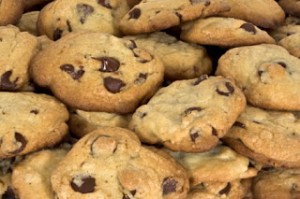Recently, I’ve lost about 6-7kg of bodyweight while adding 40kg/90lbs to my powerlifting total. Because of this success, as you might expect, I’ve been receiving a lot of questions about how one should go about trying to make gains on a cut. Now, while I fully plan to address this question in much more depth in the PowerliftingToWin Nutrition Series, I do want to give a brief overview of the strategy I use to increase strength on a diet.
If you’d rather watch than read:
Gaining Strength While Cutting
First of all, is it even possible to make strength gains on a diet? Yes, yes it is! And that is honestly the first and biggest key to making strength gains on a cut. You have to believe that it is possible and you have to expect that you can do it. This is not some hippie nonsense. Plenty of people legitimately preach that this isn’t possible.
There are documented case studies of people being falsely diagnosed with cancer and then dying shortly thereafter with cancer symptoms. That is how strong the placebo effect can be. If you don’t think this same power will work against you if you go into your cut expecting to lose size and strength, you’re absolutely wrong.
Let me give you one famous example from athletics. For hundreds of years, human beings have been competing to see who can run the mile the fastest. No one had ever broken the four minute barrier. Scientists literally proclaimed that it was impossible. In the early 20th century, a man by the name of Roger Bannister finally broke the four minute barrier. And since Bannister did it? More than 20,000 athletes, including high school students, have managed to break the “impossible” four minute barrier.

Roger Bannister crossing the tape at the end of his record breaking mile run at Iffley Road, Oxford. He was the first person to run the mile in under four minutes, with a time of 3 minutes 59.4 seconds. (Photo by Keystone/Getty Images)
Dr. Layne Norton has also said there is no reason you cannot make strength gains on a cut from to time to time as well.
Optimize Your Nutrition
Obviously, belief isn’t enough. If you want to gain strength on a cut, the second key is going to be optimizing your nutrition. Let’s break down some of the most important factors:
- Rate of Weight Loss: ~0.6-0.8% of BW per week
For most of you this is going to work out to 1-1.5lbs or 0.5-0.75kg per week. For more information on cutting and bulking, see this article.
- Refeed Days: x2 Per Week on your most important workout days
If you train on Mon/Tue and Thu/Fri, like I do, you can copy my example. I do my refeed days on Monday and Thursday. This way, my Monday workout benefits from the higher intake, but so does my Tuesday workout because glycogen levels will remain elevated from the refeed going into the next workout. The same thing happens with my Thursday/Friday pairing. If you train Mon, Wed, and Fri, you’d opt for Monday and Friday for your refeed days. You’d probably make Wednesday a “light” or easier day compared to Monday and Friday.
- Conditioning: I recommend HIIT 1-2x per week
Conditioning is the last recommendation I’d make. By including some conditioning once, preferably twice, a week, you’re going to increase metabolic rate, allow yourself to eat more, and improve your nutrient partitioning on the conditioning days. You’ll also build up work capacity and keep yourself in decent shape.
- Week to Week Changes: Don’t take calories away in big chunks
The last nutritional key that I want to discuss is the general overall diet strategy. Unlike a lot of people, I never slash my calories by 500 or some other arbitrary number when I hit a “plateau”. The most I will ever subtract in a single week is 100kcal worth of macronutrients. The reason that I do this is by slowly taking out macros, I can settle on the absolute highest intake that is possible while still rate at the weight that I want to lose. People often add 5lbs to set a PR, but they don’t take the same, slow gradual approach with nutrition. When you do take the gradual approach, you’ll see that you don’t have to take calories so low by the end of the diet and, on average, you eat way more from week to week during your cut which, of course, helps maintain performance.
Optimize Your Programming
If you have your psychology and nutrition dialed in, you’re still going to need to optimize your programming to account for your diminished recovery abilities while dieting.
What is the first thing that most people do when they start cutting? They slash their volume! The theory behind this is that because you’re not eating as much, you can’t recover from as much. While this may be true to some extent, necessarily dropping the volume almost necessarily ensures detraining. After all, if you were bulking, and you just randomly dropped volume long term, would you expect long term gains or long term losses? You’d expect losses.
Well the same principles apply when cutting. When we want to keep volume as high as is possible for us personally while still being able to recover. I actually make no attempt whatsoever to reduce volume while cutting. So how do I ensure recovery? Glad you asked: autoregulation. Because my volume is autoregulated, it stays as high as I can personally manage given my circumstances. This is very similar to the caloric intake principle. Rather than assuming you know what you can do or you know what you need, you let reality be your guide; you autoregulate based on real world results.
Keep your volume as high as you can while you cut! If you have all of your other factors dialed in: psychology, nutrition, sleep, effort, etc. you might actually be able to slightly increase volume through autoregulation while cutting. If you can do this, you’ll might make gains and, at the very least, you’ll maintain as much of your strength and muscle as is possible for you on that particular diet.
If you’d like help setting up an autoregulated program, or dialing in your nutrition so that you can attempt to make gains while you diet, I do offer coaching services here at PowerliftingToWin. You can shoot me an email:
[contact-form-7 id=”3245″ title=”Contact form 1″]
If you want to learn more about nutrition in general, check out the PowerliftingToWin Nutrition Series. Better yet, grab a copy of EatingToWin. In the book, I break down literally every single relevant aspect of maximizing nutrition for powerlifting performance.
Like this Article? Subscribe to our Newsletter!
If you liked this articled, and you want instant updates whenever we put out new content, including exclusive subscriber articles and videos, sign up to our Newsletter!
Questions? Comments?
For all business and personal coaching services related inqueries, please contact me at [contact-form-7 id=”3245″ title=”Contact form 1″]
